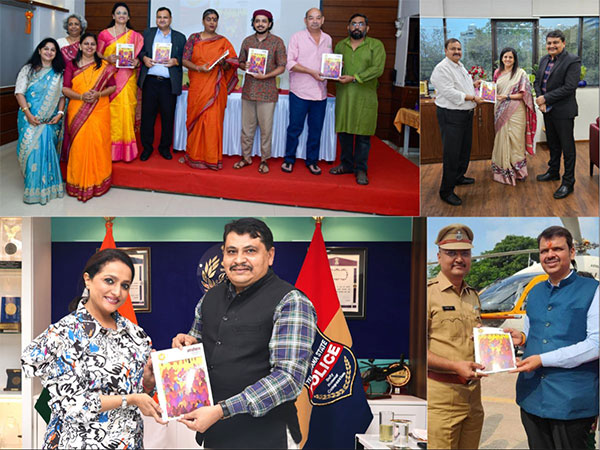Rosneft launches a new program to explore and conserve the Arctic ecosystems
Feb 19, 2024

VMPL
Moscow [Russia], February 19: Engaged proactively in conserving biodiversity and promoting ecological balance in the Arctic region, Russian oil company Rosneft has launched a new program to study and conserve bioindicator species endemic to the Arctic ecosystems. The company unveiled its newest program at the EXPO RUSSIA's Media Centre on February 16th 2024 jointly with the Ministry of Natural Resources and Environment of the Russian Federation and the Severtsov Institute of Ecology and Evolution.
In the course of the study between 2024 to 2027, Rosneft in collaboration with the Ministry of Natural Resources and Environment of the Russian Federation and experts from the Severtsov Institute of Ecology and Evolution plans to study the population of polar bears and reindeer in the north of Krasnoyarsk Krai. The study will monitor the population, the migration routes, and the genetic diversity of these mammals, native to the region. Additionally, it will assess the state of habitats of valuable fish species in the estuary of the Yenisei River and identify the environmentally sensitive areas along the shores of the Yenisei Gulf and the adjacent coastal waters of the Kara Sea.
Speaking about the latest program, Alexander Pashali, Director of the Department of Scientific and Technical Development and Innovations at Rosneft, said, "The program will continue the company's multi-year research. It is aimed at studying key bioindicator species and conserving the biodiversity of the Russian Arctic. The new four-year cycle of work offers new research methods and objectives, and promises unique results. As part of the aerial count of the Kara polar bear population, we plan to take photographs in the visible-light and infrared spectra and process them using pre-trained neural networks. We plan to use artificial intelligence to significantly speed up data processing, as the new aerial count implies taking at least 2 million photographs."
The program will conduct the first-ever aerial count of polar bears to assess their state in the Kara Sea subpopulation. The in-depth study will provide the scientific community with previously unavailable data. Two aircraft-turned-laboratories fitted with the latest thermal imaging cameras will perform simultaneous flyovers to gather photographic data, followed by the use of AI-augmented software to process the aerial photographs taken in the visible-light and infrared spectra. Researchers will also test a prototype of a cutting-edge satellite transmitter that was developed specifically to track the bears' location, activity and seasonal migration patterns.
Recognised as an indicator of the resilience and stability of North Siberian ecosystem, primarily the Western part of the Taymyr Peninsula, the population of wild reindeer will also be monitored for the first time. The data accumulated will help researchers gain a deeper understanding concerning the ongoing environmental changes in the area and its influence on the surrounding.
Sergei Naidenko, Director of the Severtsov Institute of Ecology and Evolution, asserted, "With global warming and climate change observed in the Arctic, animal behaviour is constantly changing. Scientists monitor these changes to better understand the processes taking place in the region."
The flyovers to identify the sensitive area will be conducted by a laboratory airplane equipped with specialized onboard equipment, including automated photo and video recording equipment, a high-precision GPS unit, and workstations for use by researchers and observers. The aircraft that will cover the 1,200 kilometers area is designed meticulously to operate in the extreme conditions of the Arctic region.
In the estuary of the Yenisei River, the researchers will examine the habitat and the state of populations of red-listed and valuable fish species including sterlet sturgeon, Siberian sturgeon, Siberian taimen, muksun, nelma, Arctic cisco, and common whitefish.
Based on the findings of this four-year-long study, recommendations will be formulated around measures to protect and conserve the Arctic species. The genetic sampling data thus obtained will be analysed and used to help replenish Russia's National Stock of Reference Genetic Materials. These data will also play a crucial role in developing measures to protect the most critical habitats of red-listed and valuable avian species, including the yellow-billed loon, the white-tailed eagle, the peregrine falcon, the Bewick's swan, the red-breasted goose, and the lesser white-fronted goose.
(ADVERTORIAL DISCLAIMER: The above press release has been provided by VMPL. ANI will not be responsible in any way for the content of the same)









